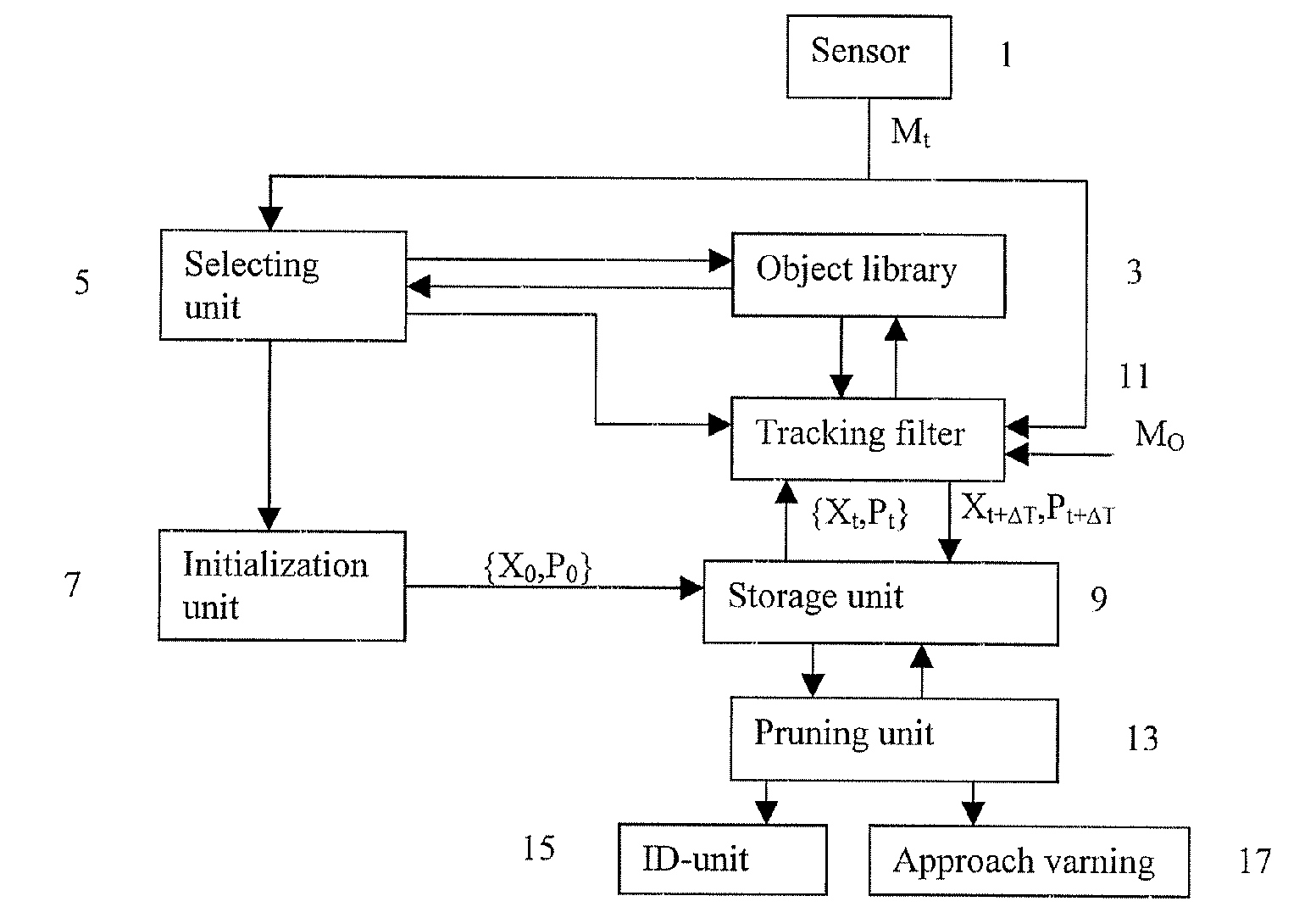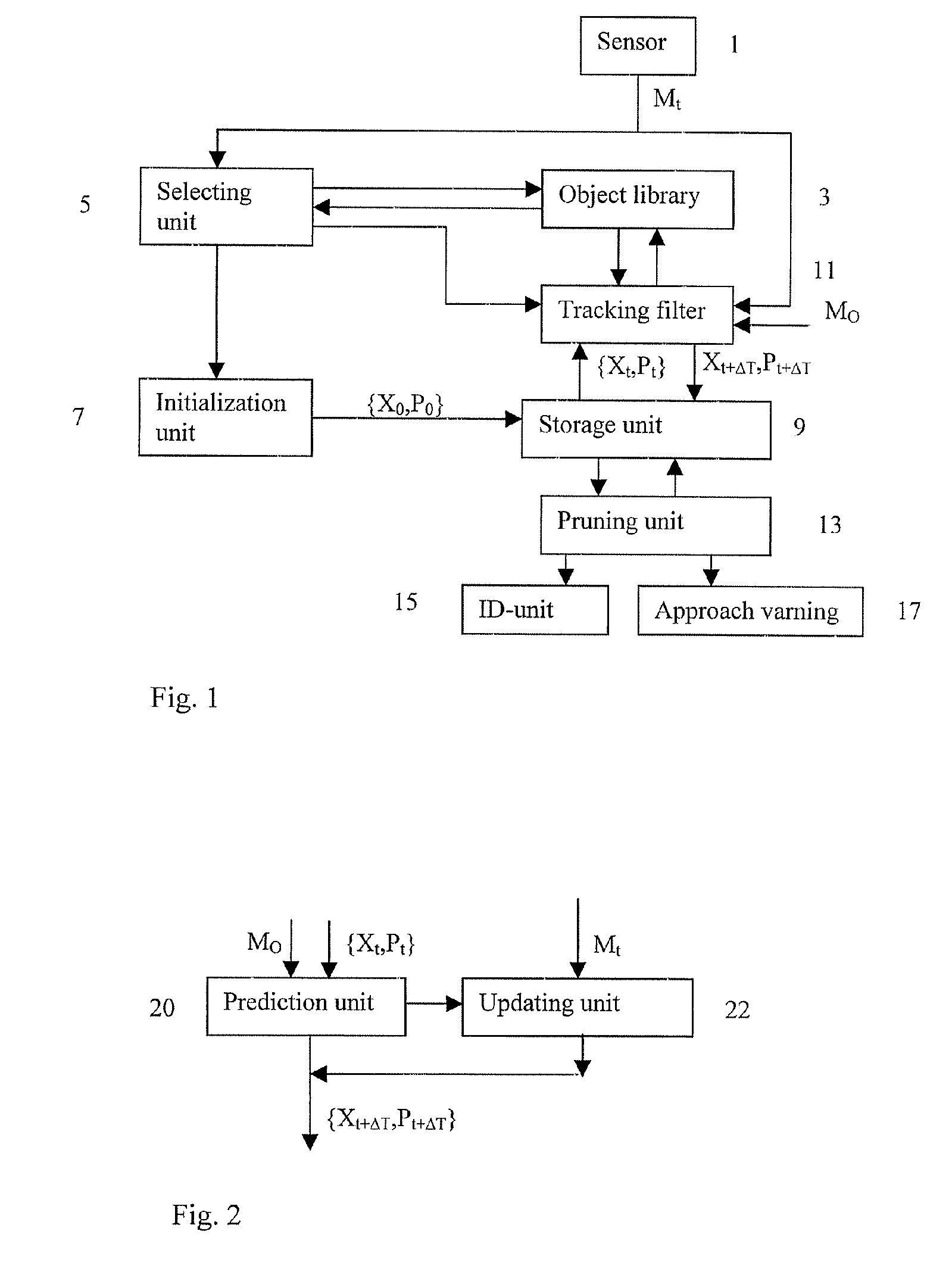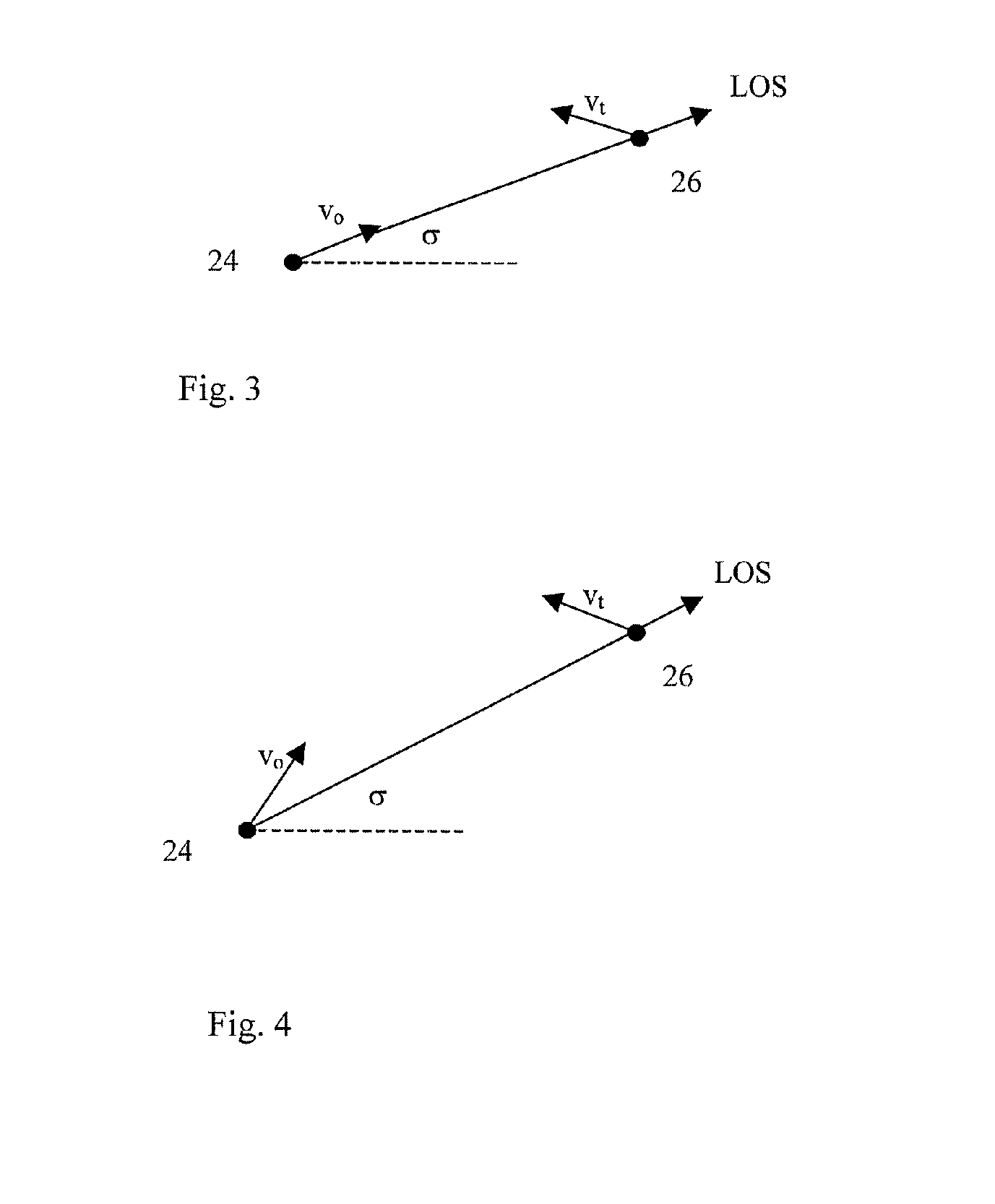Tracking of a moving object
- Summary
- Abstract
- Description
- Claims
- Application Information
AI Technical Summary
Benefits of technology
Problems solved by technology
Method used
Image
Examples
Embodiment Construction
[0034]FIG. 1 shows a block diagram over a system for determining kinematics of a moving object according to an embodiment of the invention. The system comprises at least one sensor 1 capable of producing angle measurements of a moving object. The sensor is preferably arranged on board own ship. Own ship is a vehicle or a site where the system is located. Data received from the sensor comprises at least the horizontal bearing, but it may also comprise the elevation angle. Measurements from additional sensors located on own ship, as well as from external sources, e.g. sensors on other aircraft, boats etc, whose measurements or tracks can be communicated to own ship can also be used to enhance tracking of the object.
[0035]The system comprises an object library 3 adapted for storing guidance laws and object parameters for a plurality of different object types. For each object type parameters such as weight, air resistance, drag resistance and which guidance law the object is assumed to ...
PUM
 Login to View More
Login to View More Abstract
Description
Claims
Application Information
 Login to View More
Login to View More - R&D
- Intellectual Property
- Life Sciences
- Materials
- Tech Scout
- Unparalleled Data Quality
- Higher Quality Content
- 60% Fewer Hallucinations
Browse by: Latest US Patents, China's latest patents, Technical Efficacy Thesaurus, Application Domain, Technology Topic, Popular Technical Reports.
© 2025 PatSnap. All rights reserved.Legal|Privacy policy|Modern Slavery Act Transparency Statement|Sitemap|About US| Contact US: help@patsnap.com



